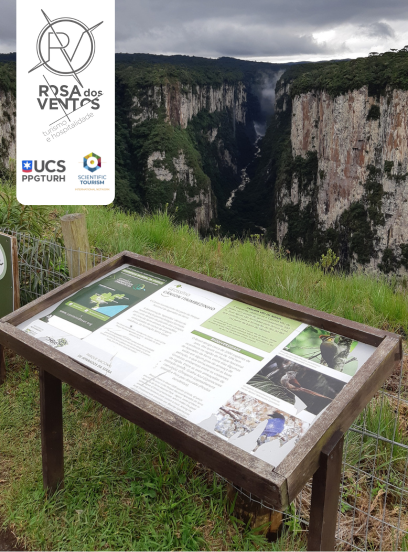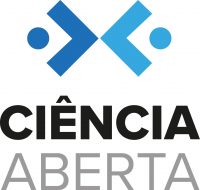Participatory monitoring of the Exploradores glacier (46°S):
Opportunities and challenges for the development of Scientific Tourism in the glaciers of chilean Patagonia
DOI:
https://doi.org/10.18226/21789061.v17ip170206Keywords:
Participatory Monitoring, Glacier Mass Balance, Citizen Science, Scientific TourismAbstract
The estimation of a glacier's mass balance, including its components such as accumulation and ablation, is a challenging task due to the meteorological complexities and access difficulties characteristic of mountainous regions. These limitations affect the temporal resolution of the data collected in the field. Nevertheless, in various parts of the world, tourist glaciers offer the opportunity to involve visitors as collaborators in scientific projects, which falls under the framework of so-called "Citizen Science." The Exploradores Glacier (46°S), one of the most visited glaciers in Chile since 2001, has been the site of activities such as ice hikes, making it an ideal candidate for the development of participatory monitoring initiatives. The objective of this research is to estimate the mass balance of the Exploradores Glacier using Citizen Science techniques and validate these results through a surface energy balance model implemented in Python, known as COSIPY. To achieve this, the "Community Workers" model was adapted and implemented through participatory workshops, installation of ablation stakes, and data collection by volunteers. The data obtained between November 1, 2021, and March 31, 2022, were processed to estimate the glacier's summer ablation, resulting in an average mass balance of -14.14 m.w.e. This value was compared to the COSIPY model estimates, which indicated an average variation of -7.78 m.w.e. Although the magnitudes of both methods differ, they show a similar trend, suggesting that the discrepancies may be due to simplifications inherent in the models. This study concludes that Citizen Science holds great potential for facilitating research in remote areas such as mountainous regions, extending the temporal and spatial coverage of data collection. Additionally, it highlights the importance of considering possible sources of error that may influence the accuracy of results obtained through these participatory methodologies.
References
Bourlon, F., Vialette, Y., & Mao, P. (2022). Science as a resource for territorial and tourism development of mountainous areas of Chilean Patagonia. Revue de Géographie Alpine, 110(1).
Cuffey, K. M., & Paterson, W. S. B. (2010). The physics of glaciers (4ª ed.). Elsevier.
Dirección General de Aguas (DGA). (2022). Inventario público de glaciares. Ministerio de Obras Públicas de Chile.
Dussaillant, I., Berthier, E., Brun, F., Masiokas, M., & Rabatel, A. (2019). Two decades of glacier mass loss along the Andes. Nature Geoscience, 12, 802–808.
Escobar, F., Casassa, G., & Peña, H. (1995). Variaciones de un glaciar de montaña en los Andes de Chile central en las últimas dos décadas. Bulletin de l’Institut Français d’Études Andines, 24(3), 683–695.
Farías-Barahona, D., Vivero, S., Casassa, G., Masiokas, M., & Rodríguez, C. (2019). Geodetic mass balances and area changes of Echaurren Norte Glacier (Central Andes, Chile) between 1955 and 2015. Remote Sensing, 11(19), 2247.
Huintjes, E., Sauter, T., Schröter, B., Maussion, F., Yang, W., Kropáček, J., & Schneider, C. (2015). Evaluation of a coupled snow and energy balance model for Zhadang Glacier, Tibetan Plateau, using glaciological measurements and time-lapse photography. Arctic, Antarctic, and Alpine Research, 47(3), 573–590.
IPCC. (2019). IPCC Special Report on the Ocean and Cryosphere in a Changing Climate (H.-O. Pörtner, D. C. Roberts, V. Masson-Delmotte, P. Zhai, M. Tignor, E. Poloczanska, K. Mintenbeck, A. Alegría, M. Nicolai, A. Okem, J. Petzold, B. Rama, & N. M. Weyer, Eds.). Cambridge University Press.
Irarrazaval, I., Dussaillant, A., Vivero, S., Iribarren-Anacona, P., & Mariethoz, G. (2022). Ice dynamics and morphological changes during proglacial lake development at Exploradores Glacier, Patagonia. Frontiers in Earth Science, 10, 791487.
Iribarren Anacona, P., Norton, K. P., & Mackintosh, A. (2014). Moraine-dammed lake failures in Patagonia and assessment of outburst susceptibility in the Baker Basin. Natural Hazards and Earth System Sciences, 14, 3243–3259.
Masiokas, M. H., Rabatel, A., Rivera, A., Ruiz, L., Pitte, P., Ceballos, J. L., Barcaza, G., Soruco, A., Bown, F., Berthier, E., Dussaillant, I., & MacDonell, S. (2020). A review of the current state and recent changes of the Andean cryosphere. Frontiers in Earth Science, 8.
Rivera, A., Bown González, F., Napoleoni, F., Muñoz, C., & Vuille, M. (2017). Manual balance de masa glaciar. CIREN.
Sauter, T., Arndt, A., & Schneider, C. (2020). COSIPY v1.3 – An open-source coupled snowpack and ice surface energy and mass balance model. Geoscientific Model Development, 13(11), 5645–5662.
Thiel, K., Arndt, A., Wang, P., Li, H., Li, Z., & Schneider, C. (2020). Modeling of mass balance variability and its impact on water discharge from the Urumqi Glacier No. 1 catchment, Tian Shan, China. Water, 12(12), 3297.
Viviroli, D., Dürr, H. H., Messerli, B., Meybeck, M., & Weingartner, R. (2007). Mountains of the world, water towers for humanity: Typology, mapping, and global significance. Water Resources Research, 43(7).
Wilderman, C. C. (2007). Models of community science: Design lessons from the field.
Downloads
Published
How to Cite
Issue
Section
License
Autores que publicam nesta revista concordam com os seguintes termos:
Os Autores mantém os direitos autorais e concedem à revista o direito de primeira publicação, com o trabalho simultaneamente licenciado sob a Creative Commons Attribution License que permitindo o compartilhamento do trabalho com reconhecimento da autoria do trabalho e publicação inicial nesta revista.
Autores têm autorização para assumir contratos adicionais separadamente, para distribuição não-exclusiva da versão do trabalho publicada nesta revista (ex.: publicar em repositório institucional ou como capítulo de livro), com reconhecimento de autoria e publicação inicial nesta revista.
Autores têm permissão e são estimulados a publicar e distribuir seu trabalho online (ex.: em repositórios institucionais ou na sua página pessoal) a qualquer ponto antes ou durante o processo editorial, já que isso pode gerar alterações produtivas, bem como aumentar o impacto e a citação do trabalho publicado (Veja O Efeito do Acesso Livre).








